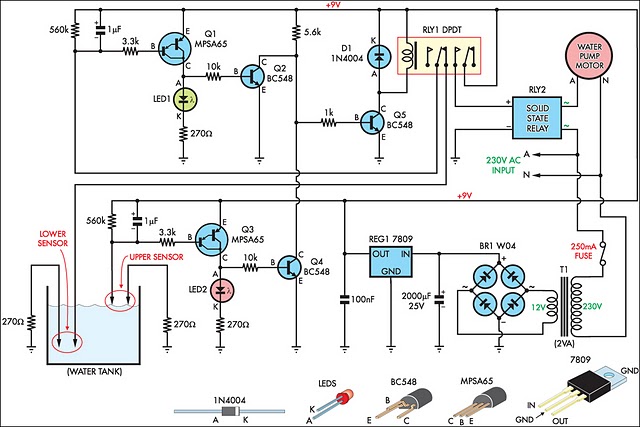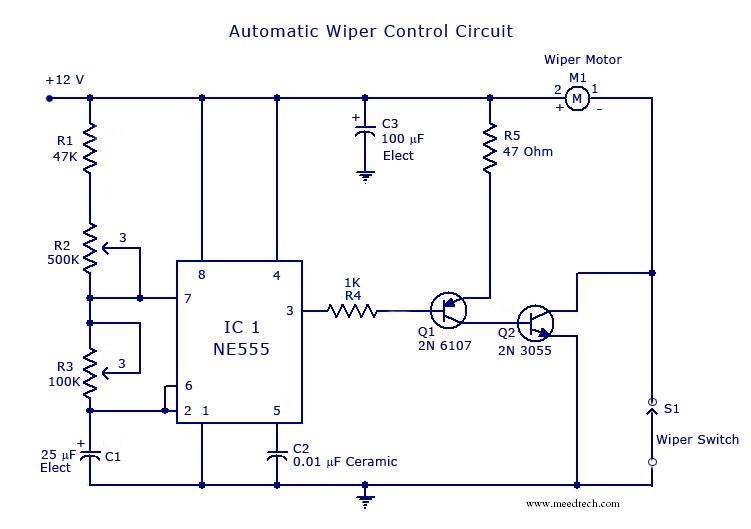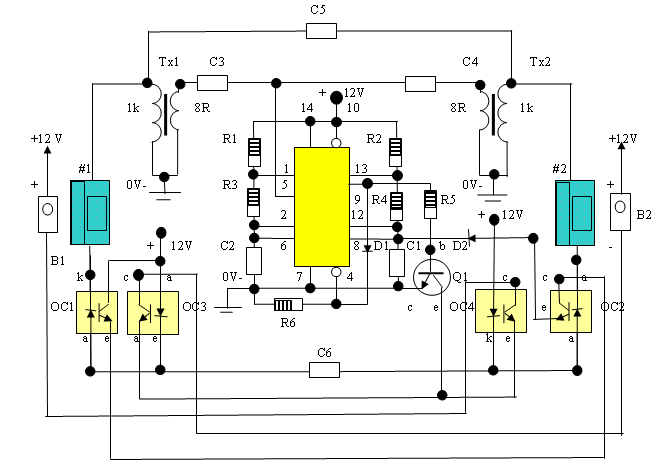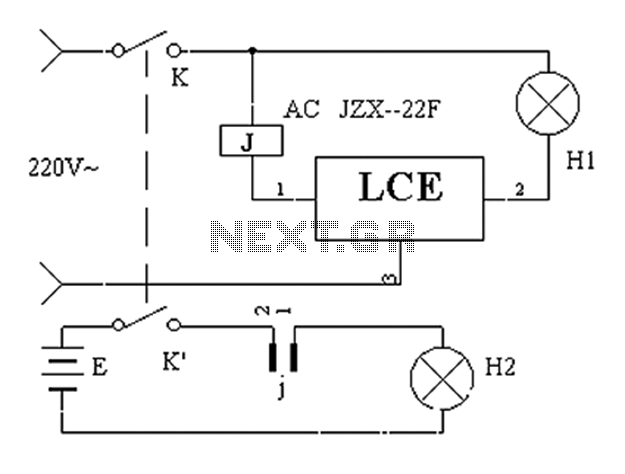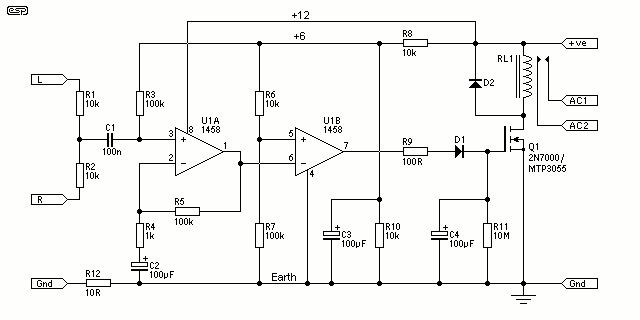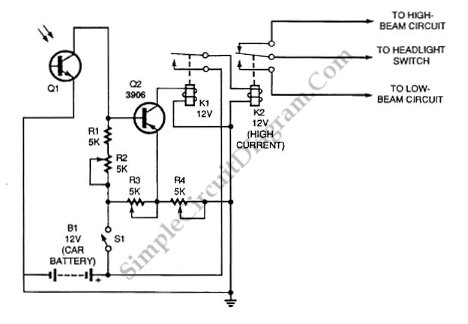
Telephone Auto Record
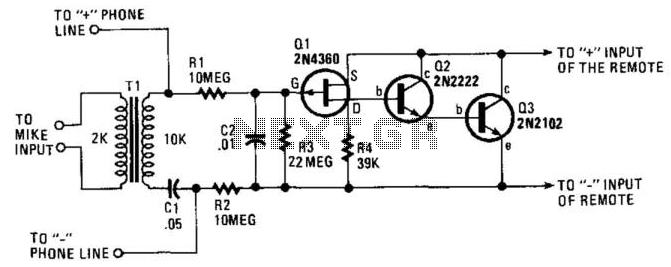
The circuit operates without the need for a battery or AC power supply. When the recorder is set to the record position and the telephone is taken off the hook, the recorder begins to capture audio. The voltage across the phone lines is approximately 48 V DC when the phone is on the hook. Once the phone is taken off the hook, the line voltage decreases to below 10 V. At 48 V, the FET remains biased off, preventing current flow through Q2 and Q3. When the receiver is off the hook and the voltage drops, Q1 begins to conduct, which activates Q2, Q3, and the cassette recorder.
This circuit is designed to function as a telephone recording device that leverages the voltage changes in the telephone line to control the operation of a cassette recorder. The circuit's operation is predicated on the voltage levels present on the telephone line, which fluctuate based on the state of the telephone (on-hook or off-hook).
When the telephone is on-hook, the circuit experiences a steady voltage of approximately 48 V DC. This high voltage keeps the Field Effect Transistor (FET) in an off state, ensuring that no current flows through the transistors Q2 and Q3, which are responsible for activating the cassette recorder. The FET acts as a switch that is controlled by the line voltage.
Upon lifting the receiver (off-hook condition), the line voltage drops significantly, falling below 10 V. This drop in voltage is critical as it allows Q1 to turn on, thereby conducting current. The activation of Q1 leads to the turning on of Q2 and Q3, which provides the necessary current to power the cassette recorder and initiate the recording process.
The circuit's design ensures that recording only occurs when the telephone is in use, thereby optimizing tape usage and preventing unnecessary recordings. The use of transistors in this configuration allows for efficient control of the recorder based on the state of the telephone line, making the circuit both practical and effective for its intended purpose. The circuit requires neither a battery nor an ac supply to make it work. Set the recorder to the record position and when the telephone is taken off the hook, the recorder starts to record everything. When the phone is on the hook, the voltage across the phone lines is about 48 Vdc. When it is taken off the hook, the line voltage drops below 10 V. When the line voltage is near 48 V, the FET is biased off and no current can flow through Q2 and Q3. When the receiver is off the hook, the voltage drops, and allows Q1 to conduct. This action turns on Q2, Q3, and the cassette recorder.
This circuit is designed to function as a telephone recording device that leverages the voltage changes in the telephone line to control the operation of a cassette recorder. The circuit's operation is predicated on the voltage levels present on the telephone line, which fluctuate based on the state of the telephone (on-hook or off-hook).
When the telephone is on-hook, the circuit experiences a steady voltage of approximately 48 V DC. This high voltage keeps the Field Effect Transistor (FET) in an off state, ensuring that no current flows through the transistors Q2 and Q3, which are responsible for activating the cassette recorder. The FET acts as a switch that is controlled by the line voltage.
Upon lifting the receiver (off-hook condition), the line voltage drops significantly, falling below 10 V. This drop in voltage is critical as it allows Q1 to turn on, thereby conducting current. The activation of Q1 leads to the turning on of Q2 and Q3, which provides the necessary current to power the cassette recorder and initiate the recording process.
The circuit's design ensures that recording only occurs when the telephone is in use, thereby optimizing tape usage and preventing unnecessary recordings. The use of transistors in this configuration allows for efficient control of the recorder based on the state of the telephone line, making the circuit both practical and effective for its intended purpose. The circuit requires neither a battery nor an ac supply to make it work. Set the recorder to the record position and when the telephone is taken off the hook, the recorder starts to record everything. When the phone is on the hook, the voltage across the phone lines is about 48 Vdc. When it is taken off the hook, the line voltage drops below 10 V. When the line voltage is near 48 V, the FET is biased off and no current can flow through Q2 and Q3. When the receiver is off the hook, the voltage drops, and allows Q1 to conduct. This action turns on Q2, Q3, and the cassette recorder.
